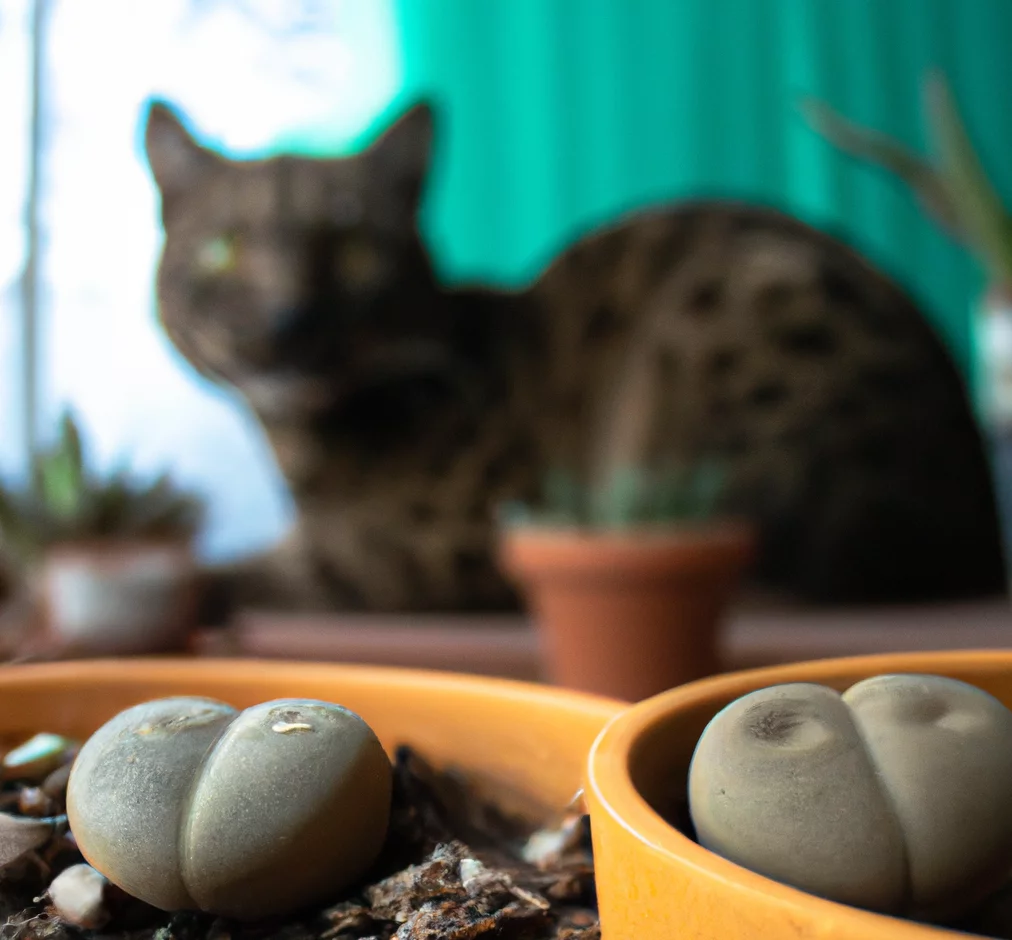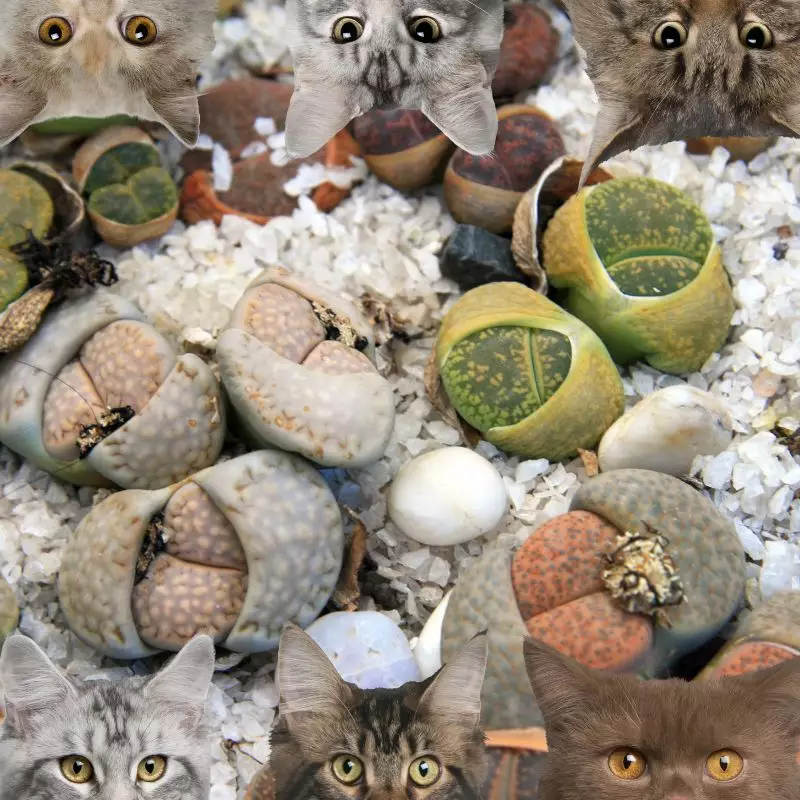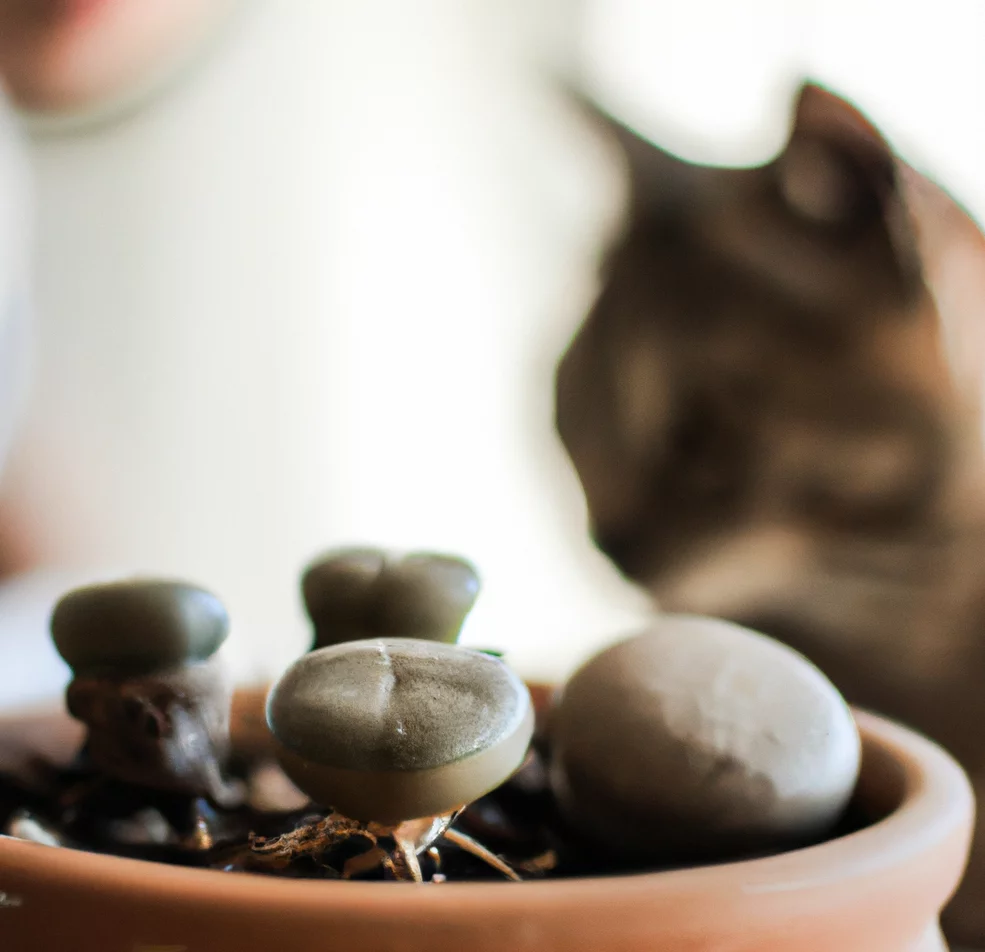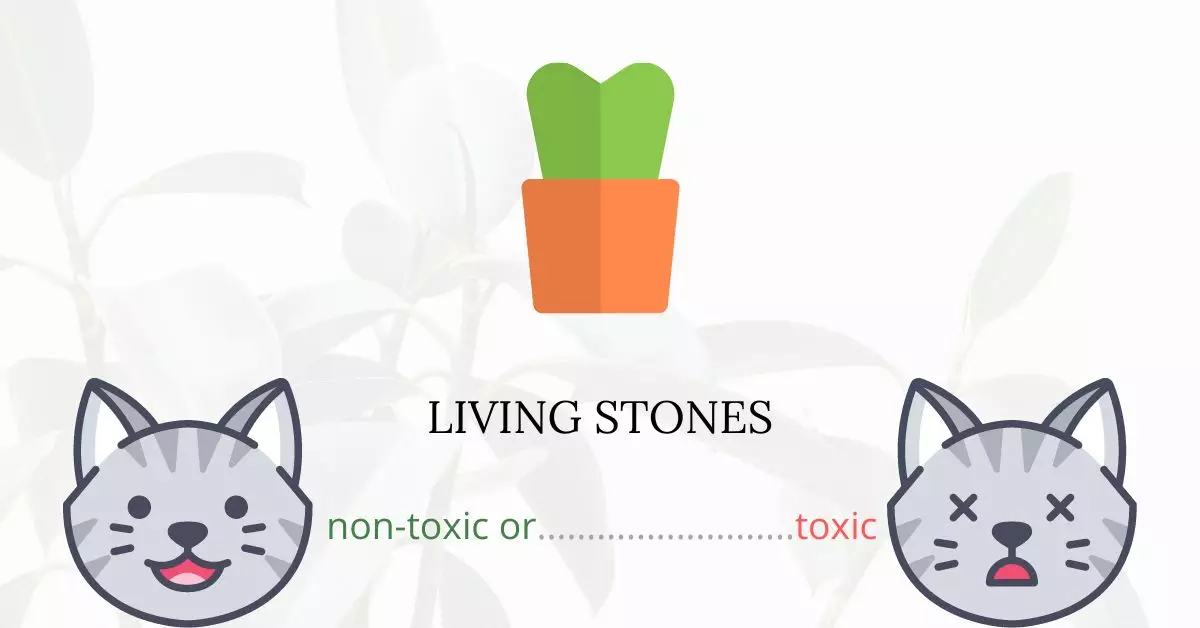Living Stones, commonly known as Lithops, are safe for cats.
This article is crafted in collaboration with a team of experienced DVMs (doctors of veterinary medicine) to ensure accuracy and relevancy. Drawing on their extensive knowledge, combined with thorough research from high-authority websites like ASPCA and PetMD, we aim to offer comprehensive insights into the potential risks associated with various plants, focusing on Living Stones in this context.
It’s worth noting that the American Society for the Prevention of Cruelty to Animals (ASPCA) also recognizes Living Stones as being safe for cats.
Can Cats Eat Living Stones?

Cats are absolutely unaffected by the majority of succulents, including living stones. Consider a living stone if your cat enjoys nibbling on plants or if you’d like not to worry about your pet consuming a plant.
It’s crucial to keep in mind that “non-toxic” does not equate to “problem-free.” Since plants are not a regular component of their diet, some cats may have slight stomach distress after consuming any kind of plant.
What are Living Stones?

Living stones (Lithops naureeniae) are a species of pebble plant (Lithops). It belongs to the Aizoaceae family. The succulent is a native of Southern Africa and may survive there in the desert environment.
Due to their odd characteristics and distinctive shapes, living stones, sometimes known as lithops, are particularly well-liked succulents. They have no stem and are composed of large, paired leaves. Older plants develop in clumps of “pebbles or stones,” giving them their distinctive appearance. These plants are slow growing, making them perfect container plants. Living stones can endure low temperatures for a brief period of time as well as extreme heat and direct, strong light.
It is an acaulescent perennial, geophytic, succulent, and rarely grows alone. It forms little or large clumps, often with two to five heads that are up to one centimeter high but can occasionally have up to 28 heads or more. The daisy-like, diurnal flowers have a white center inside a brilliant golden yellow bloom that is 20–35 mm in diameter. They are challenging plants that are picky about their growing environments and need the proper care to remain happy.
Keeping Cats Away From Living Stones

The finest containers for succulents are metal crates and wire cages. The caged succulents are inaccessible to your cats. The beautiful thing about wired cages is that they don’t block the succulents from receiving sunlight and fresh air.
However, you can also attempt birdcages if you believe that the wired cages’ appearance does not go well with your décor.
Keeping cats in a cage will not be a good option because of their propensity for exploration. Please give them a variety of toys and trinkets so they can amuse themselves.
Cats are naturally curious animals that follow moving items. They won’t even be aware that succulents are present in the same house if you scatter a broad array of objects across it.
Plants to Avoid For Your Cats
If you are a cat owner and unsure if the plants growing in your yard are harmful to your cats, check out this list of toxic plants for cats. You can also check our list of non-toxic plants for cats.





